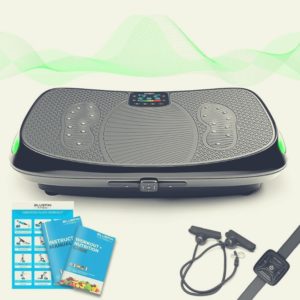Kegel exercises, also known as pelvic floor exercises, build the pelvic floor muscles, which provide support for the womb, bladder, and bowels.
Pelvic Floor Muscles: Why They’re Important
These pelvic organs may sag down into the vagina if the pelvic floor muscles are weak. This can cause not only discomfort but also urinary incontinence.
The pelvic floor in women may weaken due to factors such as pregnancy, childbirth, aging, and being overweight. To help strengthen your pelvic floor muscles, you can do Kegel exercises discreetly at any time.
You may begin by learning how Kegel exercises can help you and then following the steps laid out below to contract and relax your pelvic floor muscles.
Why Should You Do Kegel Exercises?
Your pelvic floor muscles act as support to your uterus, vagina, and rectum. Similar to any muscles in the body, they also need exercise to improve strength and ensure proper functioning.
There are many factors that can negatively affect your pelvic floor muscles.
For women, this includes pregnancy, vaginal childbirth, surgery (caesarian section), being overweight or gaining weight, chronic constipation, frequent sneezing, coughing, or laughing, and natural aging.
If you have any of the following symptoms, then Kegel exercises could be beneficial for you:
- While sneezing, coughing, laughing, or running, you let out a few drops of urine (stress incontinence)
- When urine leaks soon after you get a strong, sudden urge to pee (urinary incontinence)
- Inability to control bowel movements, causing involuntary stool leak (bowel incontinence)
Kegel exercises can also be performed during or after pregnancy to help prevent incontinence and improve bladder and bowel management.
However, Kegel exercises may be ineffective for women who experience significant urine leakage during physical activity (severe stress incontinence).
Kegel exercises may also be ineffective for women who are not able to properly empty a full bladder (overflow incontinence).
How to Do Kegel Exercises for Women
It can be challenging to find the right set of muscles when you first try your Kegel exercises. One method is to insert a clean finger into your vagina and tighten the vaginal muscles around your finger.
You can also find the right muscles by stopping your urine mid-flow, an action performed by your pelvic floor muscles. Once you do this, learn to recognize how the muscles should feel when they contract and relax.
Although, note that this method should only be used for learning purposes.
When you have a full bladder, you should not frequently start and stop your urine or do Kegel exercises.
Incomplete bladder emptying can increase your risk of a urinary tract infection (UTI).
If you’re still unsure whether you’ve found the right muscles, consult your gynecologist. They may advise you to use a device known as a vaginal cone.
You will need to insert a vaginal cone and secure it in place using your pelvic floor muscles.
After you’ve located your pelvic floor muscles, you can perform the following Kegel exercises in any position, You can do them while sitting or standing, though lying down may be the most comfortable at first, especially if you have weak pelvic muscles.
Learn the proper techniques to perform Kegels.
For best results, focus on tightening only your pelvic floor muscles. Do not hold your breath while doing the exercises and be careful not to flex the muscles in your abdomen, thighs, or buttocks.
Kegel Exercises
Seated Fast-Twitch Kegel Exercise
Your muscles have two types of tissue: fast-twitch and slow-twitch. Fast-twitch muscles react quickly and are responsible for preventing urine leakage during a sudden coughing fit, for example.
To perform a seated fast-twitch Kegel exercise, follow these steps:
Step 1: Sit on a chair and focus on your pelvic floor muscles.
Step 2: Clench your pelvic floor muscles as if you’re squeezing something between your thighs.
Step 3: Hold the squeeze for two seconds, then release.
You can repeat this exercise up to ten times per set, for three sets a day.
Seated Slow-Twitch Kegel Exercise
Slow-twitch muscles are also important. Your slow-twitch pelvic muscles help support your internal organs during endurance activities like running or cycling.
A seated slow-twitch Kegel exercise is similar to the fast-twitch exercise above, but you need to hold the contraction for longer.
Step 1: Sit on a chair and focus on your pelvic floor muscles.
Step 2: Clench your pelvic floor muscles as if you’re squeezing something between your thighs.
Step 3: Hold for five to ten seconds, then relax.
You can repeat this exercise up to ten times per set, for three sets a day.
Horizontal Kegel Exercise
Remember that Kegel exercises can be practiced in any position. Some people may even find it more comfortable to perform Kegel exercises while lying down.
Step 1: Lie flat on the floor or on your bed. You may bend your knees and place your feet flat on the floor or bed if that feels more comfortable for you. Place your hands on your stomach.
Step 2: Find your pelvic muscles and squeeze them together. Your stomach muscles should not be working at all.
Step 3: Hold the squeeze for five to ten seconds and then release.
You can repeat this ten times per set for up to three sets per day.
Standing Kegel Exercise
If you have a problem with incontinence while standing, you can also practice Kegels while standing up. To do this, follow these steps:
Step 1: Stand upright and focus on your pelvic muscles.
Step 2: Squeeze your pelvic muscles up and in. There may be some tension in your thighs, but the stomach muscles should be at rest.
Step 3: Hold the squeeze for up to ten seconds, then relax.
You can repeat this ten times per set, and try three sets per day.
Be careful not to use Kegel exercises to start and stop your urine mid-stream. Doing Kegel exercises while emptying your bladder can lead to incomplete emptying, which increases the risk of a UTI.
When to Do Kegel Exercises
Incorporate your Kegel exercises into your daily routine. Whether you’re sitting at your desk or relaxing on the couch, you can perform these exercises privately at any convenient time.
Before performing Kegel exercises, always empty your bladder. Find a quiet, private place to sit or lie down.
When you first begin doing Kegel exercises, tense your pelvic floor muscles for three seconds, then relax them for three seconds. Repeat this up to ten times or whatever is comfortable.
Over the next few days, practice your Kegel exercises for longer and for more repetitions, in the morning and at night or up to three times a day.
Kegel Exercisers
In case you don’t have the time or motivation to exercise on your own, a Kegel exerciser can increase the efficiency of your exercises.
These handy exercise devices can help to strengthen your pelvic muscles while you go about your daily activities.
They are also fairly simple to use and discreet enough to allow you to exercise anywhere at any time. All of these advantages demonstrate why a kegel exerciser is worthwhile for those looking to improve their overall well-being.
How do Kegel Exercisers Work?
Kegel exercisers target your pelvic floor muscles, training them to contract and release, and helping improve strength. Some Kegel exercise devices use internal probes to train your muscles how to do Kegels.
There are also external Kegel devices that only stimulate your muscles to do the exercises for longer than you could on your own.
Kegel Weights
Kegel weights are inexpensive and easy and simple to use. They come in the form of balls, cones, or egg shapes. One thing to note, though, is these devices do require uninterrupted time and privacy.
Also, because they are vaginally inserted, they have a higher risk of infection, so be careful to buy only FDA-approved weights.
To perform Kegel exercises, squeeze the weights using your pelvic floor muscles.
Once you find the right muscles, it will be easier to perform Kegels anywhere on your own.
Kegel Trainers
If you’re not sure how to perform Kegel exercises properly, you may also find a device with biofeedback technology that will measure the strength of your contractions as you squeeze around the device.
Most of these vaginally inserted probes are synced to mobile apps so you can track your progress and know how well you’re doing the exercises.
Kegel trainers may also have a risk of infection and require dedicated time and privacy.
Most are not FDA-approved for incontinence. Also, be reminded that the fit can be uncomfortable at first.
Internal Stimulation
Electrical stimulation (e-stim) contracts your pelvic floor muscles to do Kegel exercises for you. Although the term “electrical stimulation” may scare you, it’s completely safe.
Your brain signals your muscles to move via electrical currents.
These kegel exercisers are originally only found in doctor’s offices but can now be used at home, though they still require dedicated time and privacy, and also has a risk of infection.
These devices can be quite strong—they contract your pelvic floor muscles for you, but the internal stimulation may give you a feeling of being violated which may not be ideal for some.
External Stimulation
This type of electrical stimulation contracts your pelvic floor muscles through the skin, doing the Kegel exercises for you.
The FDA created a new category to treat incontinence, so these external Kegel exercisers are new on the market.
Although similar in functions to the vaginal e-stim, these Kegel devices provide better comfort and safety due to the external application.
Some are gel pads worn like a thin sanitary pad, so you can still perform other activities during your sessions.
There are also others that are wearable and use a similar technology better than vaginal devices, but they are not discreet and require sizing and standing or sitting still.
Magnetic Chairs
There are also magnetic chairs used for pelvic floor strengthening or Kegel exercises.
During a session, you will sit on the chair as a high-intensity electromagnetic field causes the pelvic floor muscles to contract upwards.
This type of therapy is usually administered in a doctor’s clinic over six sessions.
However, some studies suggest that this therapy is less effective than electrical stimulation. It is also quite expensive for a kegel exerciser, with extra maintenance costs to consider.
Cautions When Doing Kegel Exercises
If you experience pain in your abdomen or back after a session of Kegels, then you’re probably not doing them properly.
Remember to keep your abdominal, back, buttocks, and side muscles relaxed as you isolate and contract your pelvic floor muscles.
Don’t be afraid to seek assistance if you’re having difficulty performing your Kegels.
Your doctor or other health care provider can provide critical feedback that will assist you to locate the correct muscles and perform the exercises.
Different Kegel exercisers such as vaginal weighted cones or biofeedback technology can also help you.
Some exercisers you can simply hold in place with pelvic muscle contractions even as you continue with your daily activities.
Others may be more invasive and require more privacy and time.
For example, during a biofeedback session, a pressure sensor will be inserted to measure your pelvic floor activity as you relax and contract your muscles.
Final Thoughts
For best results, make Kegel exercises a part of your daily routine. If you do them regularly, you can expect results within a few weeks or months.
However, whether you need an external exerciser or you can do them on your own, remember not to overdo your Kegel exercises.
Just like any other muscle in your body, if you overwork your pelvic floor, it will become too tired and unable to function properly.







